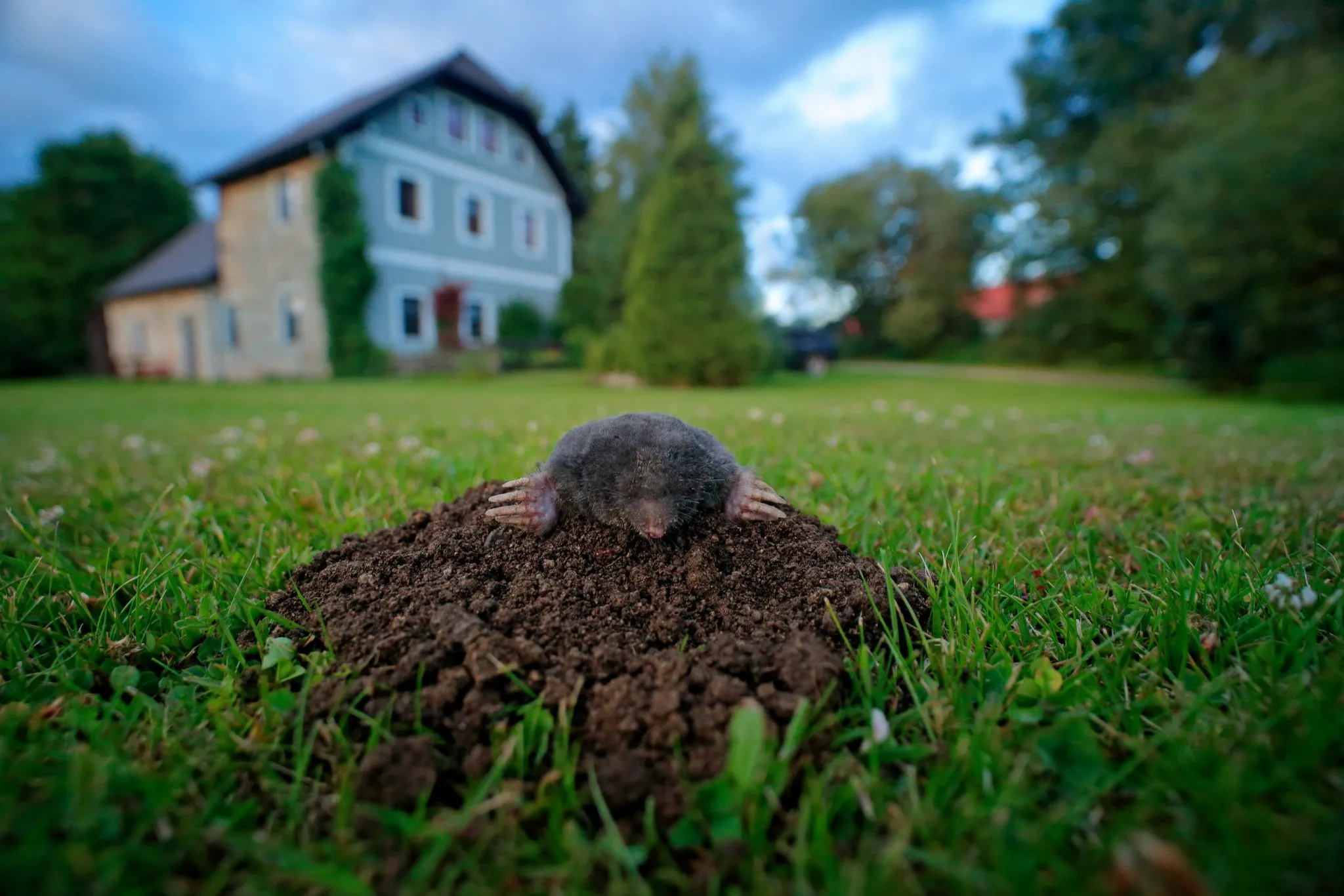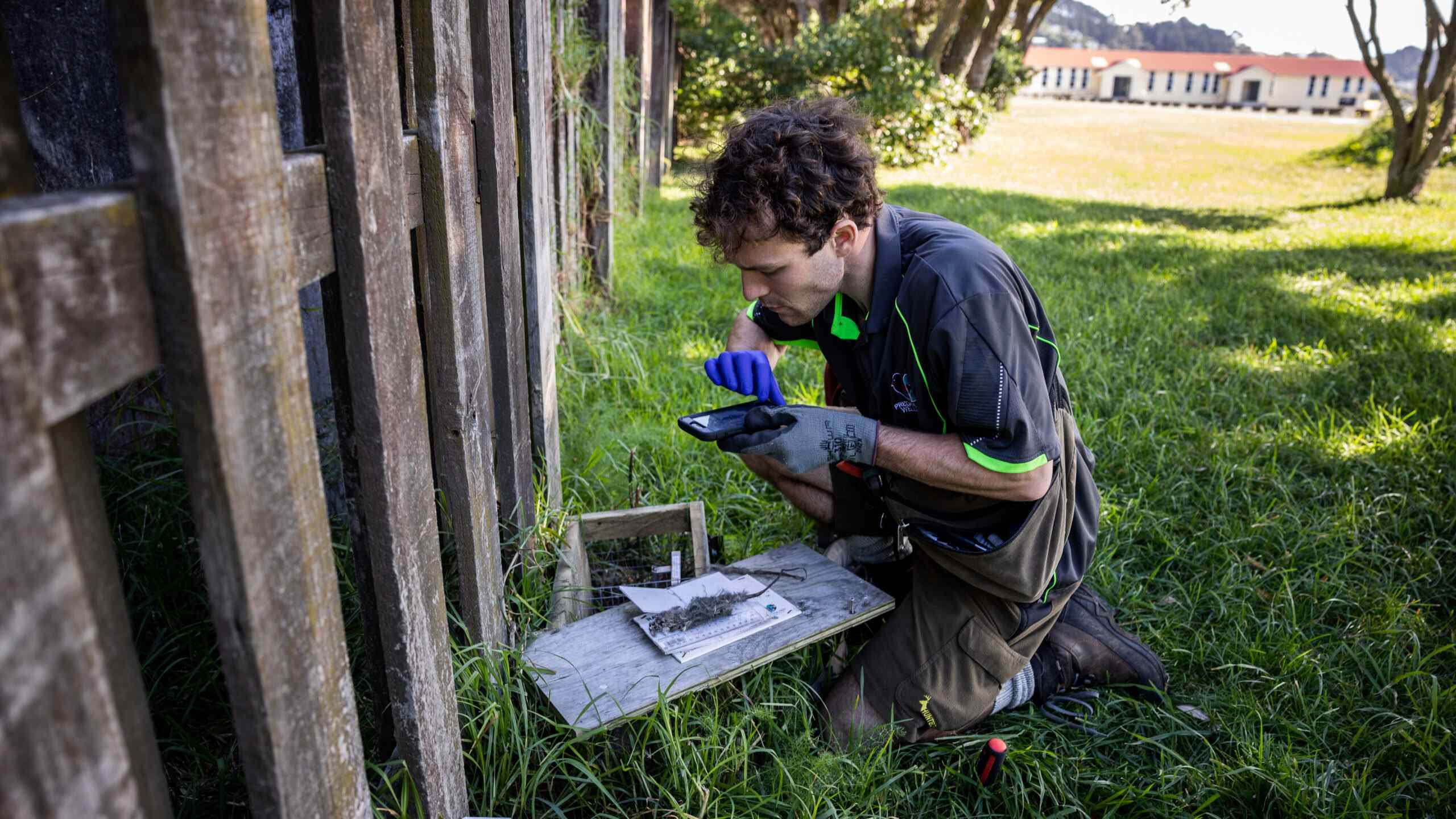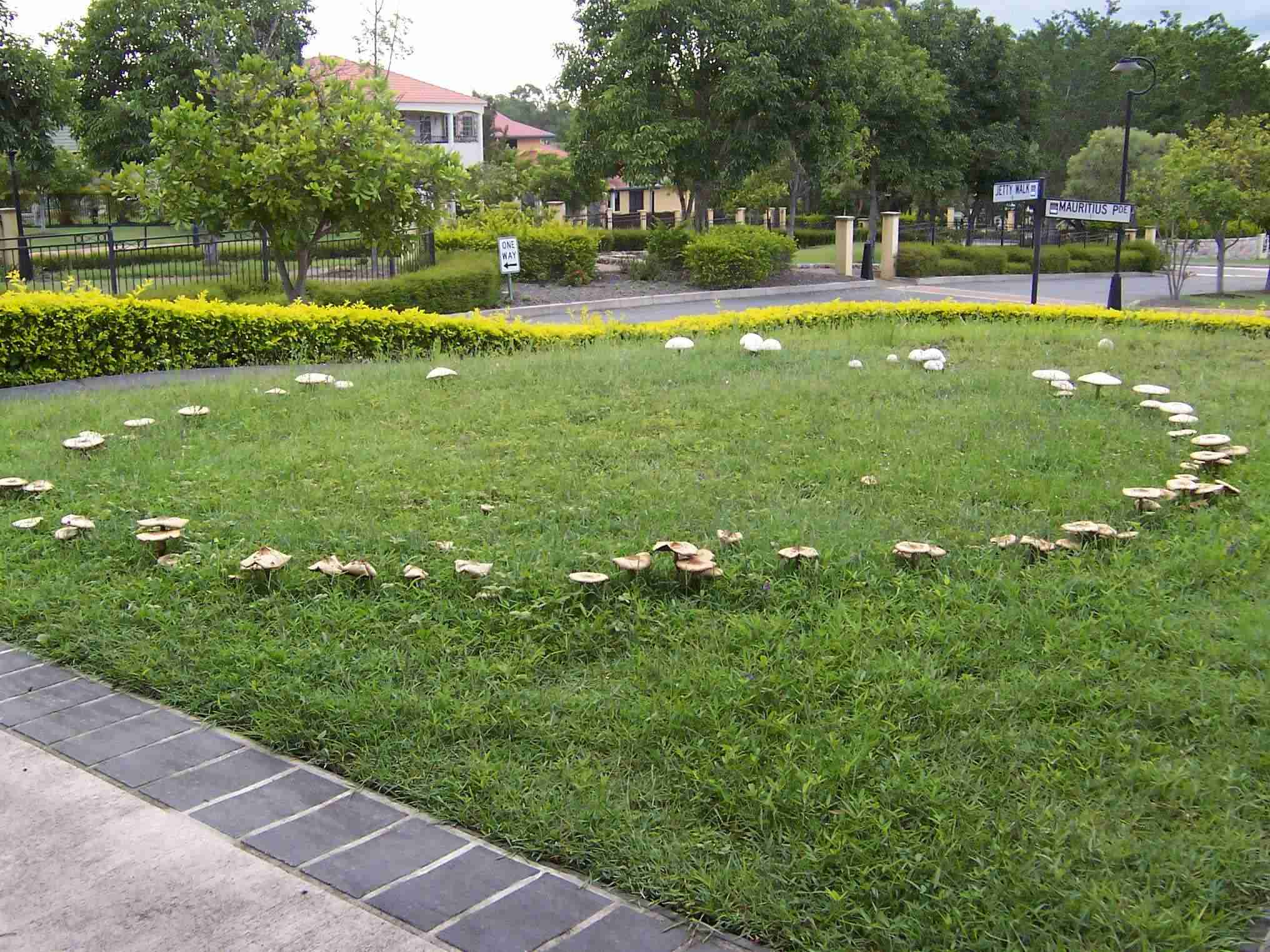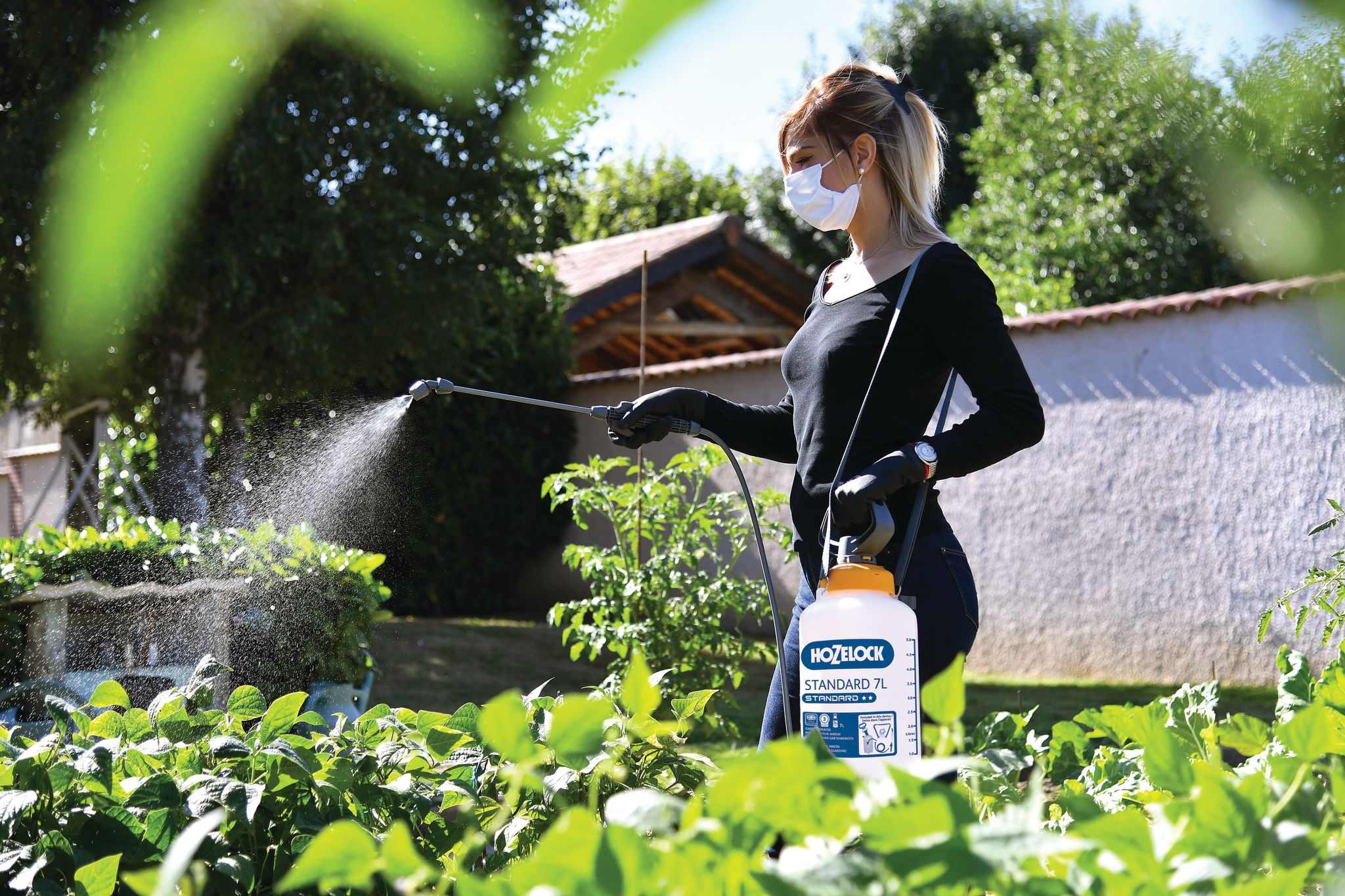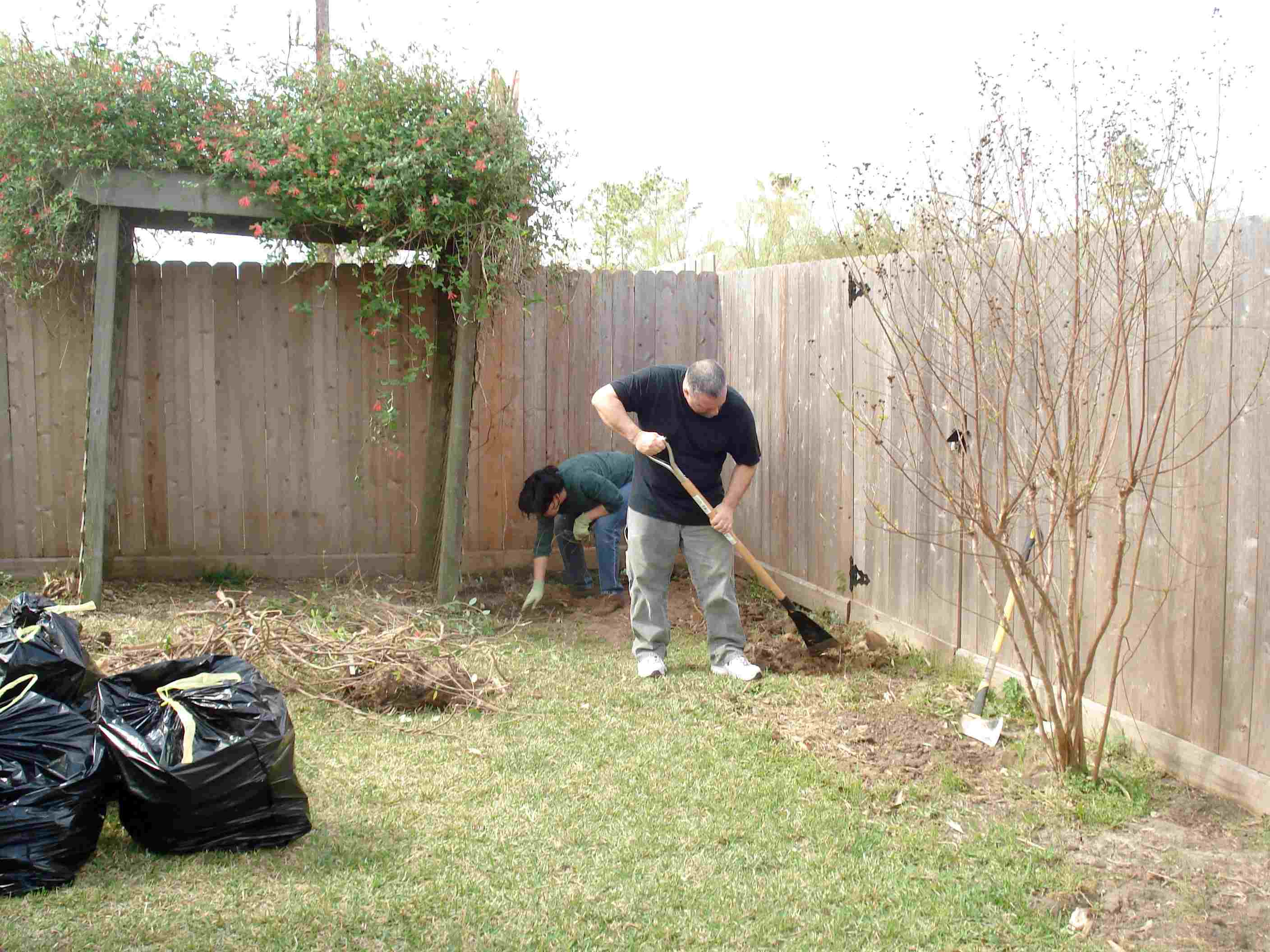Home>Gardening Tips and Tricks>How To Get Rid Of Snakes In Your Backyard
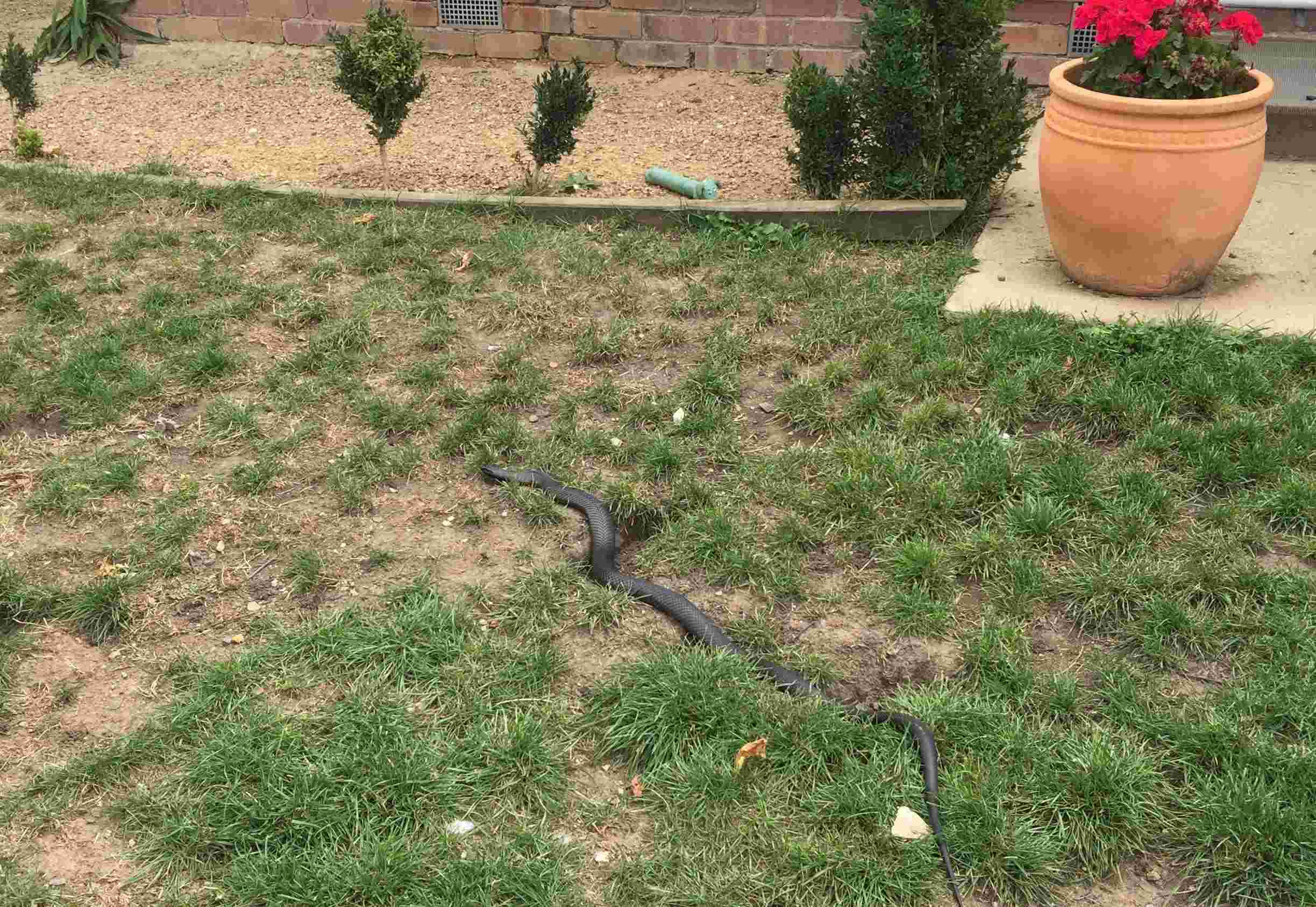

Gardening Tips and Tricks
How To Get Rid Of Snakes In Your Backyard
Published: August 5, 2023
Looking for effective solutions to rid your backyard of snakes? Discover expert tips and problem-solving techniques to eliminate snakes from your outdoor space.
(Many of the links in this article redirect to a specific reviewed product. Your purchase of these products through affiliate links helps to generate commission for Chicagolandgardening.com, at no extra cost. Learn more)
Table of Contents
- Introduction: Dealing with Unwanted Snakes in Your Backyard
- Understanding Snakes in Your Backyard
- Identifying Common Backyard Snake Species
- Prevention Methods: Keeping Snakes Out of Your Backyard
- Snake Repellents and Deterrents: Discouraging Snakes from Your Backyard
- Removing Snakes from Your Backyard: Taking Safe and Effective Action
- Natural Snake Control Methods: Maintaining a Balance in Your Backyard
- Professional Snake Removal Services: Expert Help for a Snake-Free Backyard
- Conclusion: Living in Harmony with Snakes in Your Backyard
Introduction: Dealing with Unwanted Snakes in Your Backyard
Having a backyard is a wonderful luxury, providing a space where we can relax, play, and connect with nature. However, encountering snakes in your backyard can quickly turn this peaceful oasis into a source of anxiety and fear. Whether you live in a rural area or in the suburbs, snakes are a common occurrence, and knowing how to handle them effectively can help you maintain a safe and comfortable space.
Understanding snakes and their behavior is the first step in effectively managing their presence in your backyard. Snakes are cold-blooded reptiles that play a crucial role in the ecosystem by controlling pest populations. While most snakes are harmless and help maintain the natural balance, some species can pose a threat to humans and pets. Therefore, it’s important to be able to identify the common backyard snake species in your area to determine the level of risk they may pose.
Prevention is essential in maintaining a snake-free backyard. By implementing a few proactive measures, you can significantly reduce the chances of encountering these slithery visitors. This includes making adjustments to your landscaping, removing potential hiding spots, and keeping your yard clean and tidy. Additionally, there are various snake repellents and deterrents available on the market that can help discourage snakes from entering your property.
However, if snakes have already made their way into your backyard, it’s important to know how to safely remove them. While there are effective natural snake control methods that you can try, such as using barriers or introducing natural predators, it’s crucial to prioritize your safety and seek professional help if needed. Professional snake removal services have the experience and knowledge to safely and humanely handle snake situations, ensuring the well-being of both you and the snake.
In this article, we will explore various methods and techniques to deal with snake presence in your backyard. By understanding snakes, implementing prevention measures, and knowing when and how to remove them, you can create a backyard sanctuary that is safe, enjoyable, and snake-free.
Understanding Snakes in Your Backyard
Before diving into methods for dealing with snakes in your backyard, it’s essential to have a basic understanding of these often-misunderstood creatures. Snakes are reptiles that play a vital role in the ecosystem, controlling populations of rodents and other pests. However, some species can pose a danger to humans and pets.
In North America, there are several common backyard snake species to be aware of. One such species is the Garter snake, known for its distinct striped pattern. Garter snakes are generally harmless and prefer moist areas near water sources. Another common species is the Rat snake, which is excellent for pest control as it preys on rodents. However, Rat snakes can grow quite long and may startle homeowners with their size.
Rattlesnakes are another species found in certain regions, known for their venomous bites and distinctive rattling sound. It’s important to note that not all venomous snakes have rattles, so it’s best to exercise caution when encountering any unknown snake.
It’s vital to remember that most snakes are not aggressive and would rather avoid human interaction. They typically retreat when approached and only strike if they feel cornered or threatened. Understanding their behavior and habitat preferences can help you assess the level of risk they pose and take appropriate action.
Snakes are ectothermic, meaning they rely on external heat sources to regulate their body temperature. This is why they are most active during warm weather, particularly in the spring and summer months. During colder periods, snakes may hibernate or enter a state of brumation, a form of dormancy.
While venomous snake bites are rare, it’s crucial to be able to identify venomous snakes from non-venomous ones. Venomous snakes often have triangular-shaped heads, vertical pupils, and heat-sensing pits between their eyes and nostrils. However, it’s always best to avoid attempting to handle or identify snakes without proper knowledge or training.
By understanding the habits, behaviors, and characteristics of the various snake species in your area, you can better assess and address the snake presence in your backyard. This knowledge will guide your approach in implementing preventive measures and selecting appropriate methods for snake removal, ensuring the safety of both yourself and the snakes.
Identifying Common Backyard Snake Species
When it comes to dealing with snakes in your backyard, being able to identify the species is crucial. This knowledge will not only help you assess the level of risk they may pose but also determine the appropriate course of action. Here are some common backyard snake species that you should be familiar with:
- Garter Snake: Garter snakes are one of the most common snake species found in North America. They are typically small to medium-sized, with a slender body and distinctive stripes. Garter snakes are non-venomous and pose little to no threat to humans. They often inhabit moist areas near water sources, such as gardens, ponds, or streams.
- Rat Snake: Rat snakes are excellent climbers and can often be found in trees, attics, or sheds. They are known for their ability to control rodent populations. Rat snakes are generally non-venomous and non-aggressive but can grow quite long, which may startle homeowners who encounter them.
- Rattlesnake: Rattlesnakes are venomous snakes that have a distinct rattle at the end of their tails. They are typically found in rocky or desert habitats, and their venomous bite can be dangerous if not treated promptly. It’s important to exercise extreme caution when encountering a rattlesnake and to seek professional assistance for their removal.
- Copperhead: Copperheads are venomous snakes that can be found in wooded or swampy areas. They are known for their distinctive copper-colored heads and hourglass-shaped markings on their bodies. Copperhead bites can cause pain and swelling, so it’s crucial to exercise caution and seek medical attention if bitten.
- Water Snake: Water snakes are often mistaken for venomous snakes due to their aggressive behavior and striking patterns. However, most water snakes are non-venomous and prefer to retreat when confronted. They are commonly found near bodies of water, such as lakes, rivers, or ponds.
Remember, it’s always best to err on the side of caution and assume that any unknown snake is venomous until properly identified. If you are unsure about the species of a snake in your backyard, it’s recommended to contact a wildlife expert or professional snake removal service for assistance. They have the expertise to identify snake species accurately and provide appropriate guidance in managing their presence.
Knowing the common backyard snake species in your area will empower you to make informed decisions while taking necessary precautions to ensure a safe and snake-free environment.
Prevention Methods: Keeping Snakes Out of Your Backyard
Prevention is key when it comes to managing snake presence in your backyard. By implementing a few simple measures, you can significantly reduce the likelihood of encountering these slithery visitors. Here are some effective prevention methods to consider:
- Keep your yard tidy: Snakes are attracted to cluttered areas where they can hide. Keep your yard neat and free of debris, including piles of leaves, wood, or rocks. Ensure that grass and shrubs are regularly trimmed, minimizing potential hiding spots.
- Remove potential food sources: Snakes are attracted to areas with abundant prey. Remove or control rodent populations around your property by keeping garbage tightly sealed, clearing away bird feeders, and sealing any gaps or holes that could serve as entry points for rodents.
- Seal entry points: Conduct a thorough inspection of your yard and home, looking for any gaps, cracks, or holes that snakes could use as entry points. Seal these openings with caulk or other appropriate materials to prevent snakes from finding their way in.
- Install snake-proof fencing: Installing a snake-proof fence around your property can provide an effective barrier. Use small gauge mesh or hardware cloth buried at least six inches deep and rising at least three feet high to prevent snakes from slithering in.
- Eliminate water sources: Snakes need water to survive, so eliminating standing water sources can discourage them from lingering in your backyard. Fix any leaky hoses or faucets, empty bird baths or pet water bowls when not in use, and ensure proper drainage around your yard.
- Utilize natural deterrents: Certain plants, such as marigolds, wormwood, and lemongrass, are believed to repel snakes due to their strong odor or prickly foliage. Consider incorporating these plants into your landscaping as a natural snake deterrent.
It’s important to note that while these prevention methods can greatly reduce the chances of snakes entering your backyard, they are not foolproof. Snakes are adaptable creatures and may find ways to overcome some preventative measures. Therefore, it’s essential to remain vigilant and periodically assess the effectiveness of your prevention efforts.
By implementing these prevention methods, you can create a less appealing environment for snakes and minimize the risk of encountering them in your backyard. However, if snakes have already made their way onto your property, it’s crucial to know how to handle their presence and safely remove them. We will explore snake removal methods in the following section.
Snake Repellents and Deterrents: Discouraging Snakes from Your Backyard
In addition to implementing preventive measures, using snake repellents and deterrents can be an effective way to discourage snakes from entering your backyard. While there is no foolproof method to guarantee complete snake eradication, these products can help reduce the likelihood of snake encounters. Here are some common snake repellents and deterrents to consider:
- Chemical repellents: Chemical snake repellents are available in the form of sprays or granules. These products contain ingredients that emit strong odors or tastes that are unpleasant to snakes. By creating a barrier of scent or taste around your property, you can deter snakes from entering. However, it’s important to carefully follow the instructions and use repellents that are safe for your specific environment and pets.
- Ultrasonic devices: Ultrasonic snake repellent devices emit high-frequency sound waves that are unpleasant to snakes, causing them to retreat. These devices are battery-operated and can be placed strategically around your backyard. While some users report success with ultrasonic devices, their effectiveness may vary depending on factors such as snake species and environmental conditions.
- Natural deterrents: Certain natural substances and plants are believed to repel snakes due to their strong scent or properties. For example, substances like cinnamon oil, clove oil, or garlic are said to deter snakes. Planting species like lavender, rosemary, or sage can also act as natural deterrents. While the effectiveness of these natural remedies may vary, they are worth considering as an additional layer of defense.
- Physical barriers: Installing physical barriers can help prevent snakes from entering your property. This includes snake-proof fences made of small-gauge mesh or hardware cloth, buried at least six inches deep and rising at least three feet high. Additionally, you can add snake-proof wire mesh to cover openings in foundations, crawl spaces, or gaps under doors to block potential entry points.
- Noise and vibrations: Snakes are sensitive to vibrations and noise. By creating a noisy and vibrating environment, you can make your backyard less inviting to them. This can be achieved through methods such as playing a radio, using wind chimes, or placing vibrating devices strategically around your property.
It’s important to note that the effectiveness of snake repellents and deterrents may vary depending on factors such as snake species, environmental conditions, and the persistence of the snakes. Additionally, it’s crucial to understand that these methods are temporary and may require regular reapplication or maintenance to remain effective.
When using any snake repellents or deterrents, it’s essential to prioritize safety by carefully following instructions, considering any potential risks to the environment or other animals, and seeking expert advice if needed. Remember, the goal is to discourage snakes from entering your backyard, not to harm or endanger them.
Using snake repellents and deterrents in conjunction with preventive measures can create a more snake-resistant environment in your backyard. However, if snakes persist or you encounter venomous species, it is recommended to seek professional snake removal services for safe and effective management.
Removing Snakes from Your Backyard: Taking Safe and Effective Action
Discovering snakes in your backyard can be a cause for concern, especially if you have young children or pets. While prevention and deterrent methods can help minimize the chances of encountering snakes, it’s important to know how to safely remove them if they do appear. Here are some steps to consider when removing snakes from your backyard:
- Stay calm and keep your distance: When you see a snake in your backyard, it’s essential to remain calm and give it the space it needs. Most snakes, even venomous ones, will prefer to retreat rather than confront humans. Keep a safe distance and avoid any sudden movements or provocation that could agitate the snake.
- Identify the snake: If you have the knowledge and experience to identify the species of the snake, understanding whether it is venomous or non-venomous can help determine the level of urgency and the appropriate course of action. However, it’s crucial to avoid trying to handle or capture the snake without the necessary expertise.
- Call a professional: In many cases, it is best to seek professional help for snake removal. There are experienced wildlife experts and snake removal services that can safely and effectively handle the situation. These professionals have the knowledge, equipment, and training to identify, capture, and relocate snakes without causing harm to the snake or yourself.
- Do not attempt DIY snake removal: While there are various techniques and tools often suggested for DIY snake removal, it is crucial to exercise caution. Trying to handle or manipulate a snake without proper expertise can lead to injuries or even fatalities. Additionally, some methods, such as snake traps or glue boards, can cause unnecessary suffering to the snake and should be avoided.
- Monitor your surroundings: While waiting for professional help to arrive, it’s a good idea to keep an eye on the snake from a safe distance. This can help guide the professionals to the snake’s location and ensure the safety of your family and pets.
- Make necessary changes: After the snake has been safely removed, assess your backyard for any factors that may have attracted the snake in the first place. Reflect on your preventive measures, potential entry points, or food sources that might have drawn the snake to your property. Make any necessary adjustments to reduce future snake encounters.
Remember, the focus should always be on the safety of both yourself and the snake. Unless you are experienced in handling snakes, it is best to leave the removal and relocation to professionals who can ensure the well-being of everyone involved.
By taking these steps when encountering a snake in your backyard and seeking professional assistance when needed, you can effectively and safely manage snake situations and maintain a secure and peaceful environment.
Natural Snake Control Methods: Maintaining a Balance in Your Backyard
If you’re seeking more natural and eco-friendly ways to manage snake presence in your backyard, there are several methods you can try. While these methods may not completely eliminate snakes, they can help deter them or promote an environment that is less appealing to these slithering creatures. Here are some natural snake control methods to consider:
- Introduce natural predators: Encouraging natural predators of snakes, such as certain bird species or non-venomous snake species, can help control the snake population in your backyard. Providing suitable habitats and encouraging biodiversity can create a natural balance where predators can thrive.
- Remove potential hiding spots: Snakes seek out areas where they can hide and feel secure. By removing potential hiding spots, such as dense vegetation, piles of debris, or rock piles, you can make your backyard less attractive to snakes. Regularly clearing away clutter and tending to your landscaping can help deter snakes from taking up residence.
- Use barriers and exclusion methods: Creating physical barriers can prevent snakes from accessing certain areas of your property. Adding fencing with a tight weave, sealing gaps or cracks in structures, or using mesh wire to cover potential entry points can discourage snakes from entering your property.
- Make use of natural repellents: Certain natural substances are believed to repel snakes due to their strong scent or properties. For example, spreading a layer of cedar mulch or using essential oils like clove or cinnamon can create an environment that snakes find unappealing. However, the effectiveness of natural repellents may vary, so it’s important to monitor their efficacy and reapply as needed.
- Create a snake-free zone: If you have specific areas of your backyard, such as a designated play area for children or a vegetable garden, where you want to ensure no snakes are present, you can create a snake-proof zone. This can be achieved by building raised beds or installing a snake-proof fence around the designated area.
While these natural snake control methods can be effective to some extent, it’s important to remember that snakes are adaptable creatures. They may find alternative hiding spots or adjust their behavior accordingly. Therefore, it’s essential to combine natural methods with other preventive measures and remain vigilant.
It’s also important to note that snakes play a vital role in the ecosystem, helping control populations of rodents and other pests. Therefore, when implementing natural methods, it’s essential to strike a balance that respects the natural order and minimizes harm to both snakes and the ecosystem as a whole.
By utilizing these natural snake control methods and maintaining a well-managed backyard, you can create an environment that is less favorable to snakes while promoting a healthy and harmonious coexistence with nature. However, if snake encounters persist or you have concerns about venomous species, it is advisable to seek professional assistance for safe and effective snake management.
Professional Snake Removal Services: Expert Help for a Snake-Free Backyard
When faced with a snake presence in your backyard, it’s important to prioritize your safety and that of your family. In situations where you are unsure about the species of the snake or you are uncomfortable handling snakes yourself, seeking the assistance of professional snake removal services is the best course of action. Here’s why professional help can make a significant difference:
- Expertise and experience: Professional snake removal services have the knowledge and experience to identify, handle, and remove snakes safely. They are trained in snake behavior, species identification, and the proper techniques for safe removal. This expertise ensures that the snake is handled without causing unnecessary harm to the snake or yourself.
- Safe and humane practices: Professional snake removal services follow strict guidelines and use humane practices when dealing with snakes. They prioritize the well-being of both you and the snake, ensuring that the removal process is carried out in a manner that minimizes stress and harm to the snake.
- Proper equipment and techniques: Snake removal professionals have the necessary tools and equipment to handle snakes effectively. They are equipped with snake hooks, tongs, and other specialized equipment to safely capture and remove the snake from your property. This eliminates the risk of injury that can occur when attempting DIY snake removal using inappropriate or unsafe methods.
- Knowledge of local regulations: Professional snake removal services are familiar with local laws and regulations regarding wildlife removal. They understand the proper protocols for relocating snakes or dealing with venomous species, which ensures compliance with legal requirements and ethical considerations.
- Prevention and advice: In addition to snake removal, professionals can provide valuable advice and recommendations on how to make your backyard less attractive to snakes. They can assess your property, identify potential entry points, and suggest preventive measures to minimize the chances of future snake encounters.
When contacting a professional snake removal service, provide as much information as possible about the size, location, and behavior of the snake. This information will help them assess the situation and determine the urgency of the removal. It’s important to remember that snakes generally prefer to avoid human contact and will often retreat when given the opportunity.
While professional snake removal services may come at a cost, the peace of mind and safety they provide are invaluable. By entrusting the removal to experts, you ensure that the snake is handled properly, minimizing risks and ensuring a snake-free environment for you and your family.
If you are unsure about the presence of venomous snakes or have concerns about snakes in your backyard, do not hesitate to reach out to professional snake removal services for prompt and reliable assistance.
Conclusion: Living in Harmony with Snakes in Your Backyard
Encountering snakes in your backyard can be unnerving, but with the right knowledge and actions, you can create a safer and more enjoyable outdoor space. Understanding snakes and their behavior is the first step in effectively managing their presence. By familiarizing yourself with common backyard snake species, you can assess the level of risk and take appropriate measures.
Prevention is crucial in maintaining a snake-free backyard. By implementing preventive methods such as keeping your yard tidy, removing potential hiding spots, and sealing entry points, you can significantly reduce the chances of encountering snakes. Incorporating natural snake repellents and deterrents, along with physical barriers, can further discourage snakes from entering your property.
If snakes do make their way into your backyard, it’s important to prioritize safety. Calling on professional snake removal services ensures that the snakes are handled safely and humanely, while also providing guidance on preventive measures to minimize future encounters.
For those who prefer more natural methods, there are natural snake control techniques that can be employed. These methods, such as introducing natural predators, removing hiding spots, and using natural repellents, can help maintain a balance in your backyard while deterring snakes.
Remember, snakes play an important role in the ecosystem as natural pest control agents. Striking a balance between managing their presence and preserving their natural role is essential for a healthy and harmonious environment.
By implementing the strategies and methods discussed in this article, you can effectively manage snake presence in your backyard, helping to create a safe and enjoyable outdoor space for you, your family, and your pets. Whether through prevention, natural control methods, or professional assistance, you can achieve a peaceful coexistence with snakes and appreciate the beauty of your backyard sanctuary.

